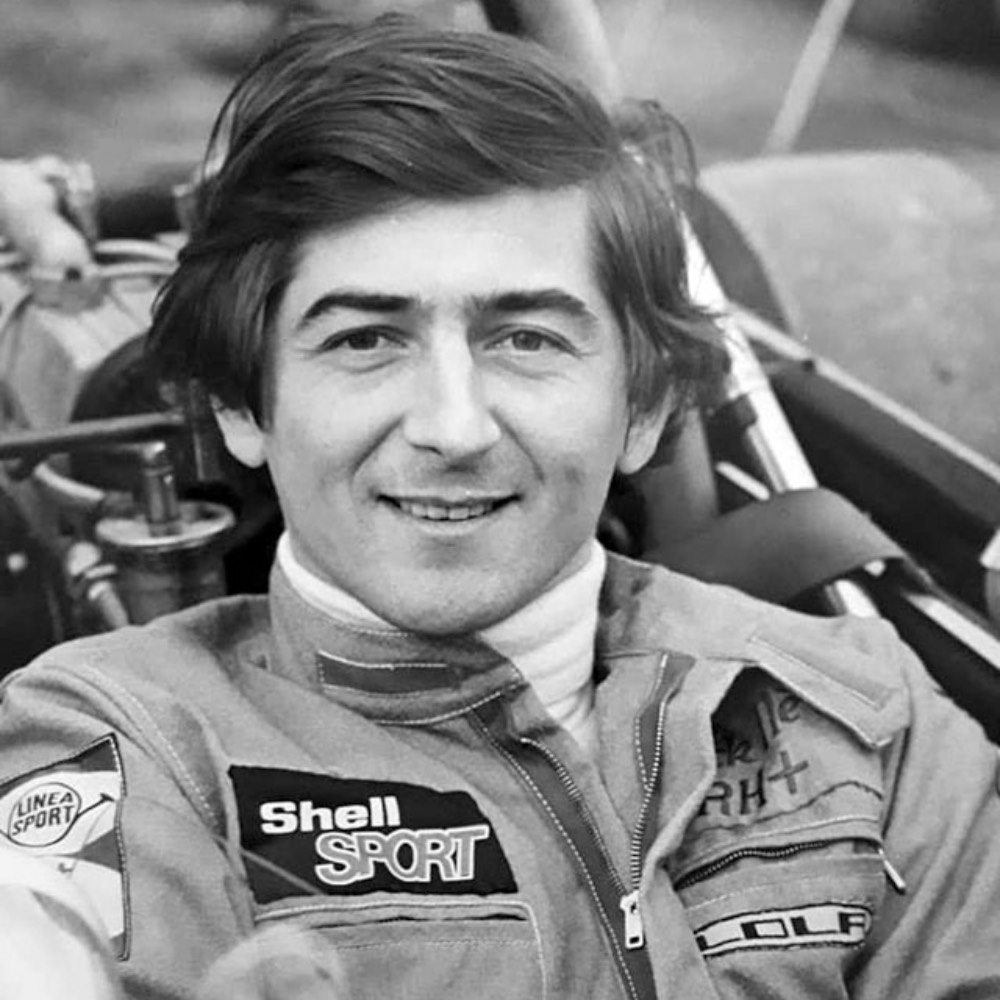
Patrick Nève
Career Statistics
Biography
Patrick Marie Ghislain Pierre Simon Stanislas Nève de Mévergnies (13 October 1949 - 12 March 2017): Belgian racing driver from Liège who competed in Formula One from 1976 to 1978, participating in 14 Grands Prix and scoring no championship points with a best result of seventh place at the 1977 Italian Grand Prix, but who holds the distinction of being the first driver to compete for Williams Grand Prix Engineering when the team made its Formula One debut in 1977. Born into Belgian nobility in Liège on 13 October 1949, Nève carried the aristocratic title 'de Mévergnies' though he raced under the simpler 'Patrick Nève.' Despite his noble heritage, Nève worked his way up through motorsport rather than relying solely on family wealth.
He took a job at the Jim Russell Racing Drivers' School in Britain, where his initial duties were humble—sweeping up and performing menial tasks around the facility. However, his talent behind the wheel soon became apparent, and he was promoted to instructor, teaching aspiring racers the fundamentals of car control and racecraft. Nève's own racing career began in Formula Ford, and in 1974 he won the STP Formula Ford Championship, establishing himself as a promising talent worth watching. He moved up to Formula 3 in Europe in 1975 and finished fourth in the championship, demonstrating consistent pace and racecraft that caught the attention of Formula One teams.
His Formula One debut came at the 1976 Monaco Grand Prix on 30 May 1976, driving a RAM Racing Brabham-Ford in the Formula One category. However, this race proved disappointing as he failed to qualify, unable to set a time fast enough to make the grid. Nève's Formula One career gained historical significance in 1977 when he was signed by Williams Grand Prix Engineering as the team's first-ever driver. Williams, founded by Frank Williams and sponsored by Saudia (Saudi Arabian Airlines), made its Formula One debut with Nève driving the Williams FW05-Ford Cosworth.
This made Nève the answer to the trivia question: 'Who was Williams' first Formula One driver?' a distinction that ensures his name remains part of Formula One history regardless of his limited success. Nève made his debut for Williams at the 1977 Spanish Grand Prix at Jarama on 8 May 1977, qualifying 20th and finishing 11th, four laps down but completing the race. However, the Williams FW05 was not competitive, and Nève struggled throughout the season to qualify for races.
He failed to qualify for several Grands Prix in 1977, including the Belgian Grand Prix (his home race), the Swedish Grand Prix, and others, as the car lacked the pace to make the grid consistently. When he did qualify, he typically started toward the back and finished outside the points when he finished at all. His best result for Williams came at the 1977 Italian Grand Prix at Monza on 11 September 1977, where he qualified 23rd but drove a solid race to finish seventh, three laps down but ahead of several rivals. This seventh place represented Nève's career-best Formula One finish, though it scored no points as only the top six finishers earned points in 1977.
Williams replaced Nève before the end of the 1977 season, signing Patrick Head's friend Alan Jones, an Australian driver who would go on to win the 1980 World Championship for Williams. Nève's time as Williams' first driver ended after just a handful of races, though his place in Williams' history was secured. For 1978, Nève found a drive with Ensign, the small British team owned by Mo Nunn, driving the Ensign N177-Ford Cosworth. However, his 1978 season proved even less successful than 1977.
Nève failed to qualify for multiple races and when he did make the grid, he finished well outside the points. His struggles with the uncompetitive Ensign machinery led to his replacement before the season's end, and his Formula One career concluded after 14 race entries across 1976-1978, with numerous failed qualifications and zero championship points from those attempts where he did start. Following his Formula One career, Nève competed in sports car racing, achieving some success in endurance events. He finished third in the 1978 Spa 24 Hours driving a BMW 530i, demonstrating his abilities in sports car competition where he was more competitive than he had been in Formula One.
He continued racing sports cars and touring cars in Europe into the early 1990s, competing in his native Belgium and across Europe in various national and regional championships. After retiring from active racing in the early 1990s, Nève concentrated on his sports-promotion agency, running a successful business that organized motorsport events and managed driver careers. This post-racing career proved more successful than his driving career had been, allowing him to remain connected to motorsport while building a stable business. Tragedy struck the Nève family in 1992 when Patrick's younger brother Guy, also a racing driver, was killed during practice for a Procar endurance race in Chimay, Belgium.
Guy was driving a Porsche 911 when the fatal crash occurred, devastating the family and the Belgian motorsport community. This loss deeply affected Patrick, who had encouraged his brother's racing career. Patrick Nève passed away on 12 March 2017 at age 67, mourned by the Belgian motorsport community and remembered by Williams as their first-ever driver. His funeral was attended by numerous figures from Belgian racing's golden era, paying tribute to a gentleman racer who represented his country at Formula One level during the 1970s.
Known for being Williams Grand Prix Engineering's first driver (a historical distinction that ensures his legacy), for his aristocratic Belgian heritage, for his work at the Jim Russell Racing School, and for his seventh-place finish at Monza representing his career-best result, Patrick Nève's Formula One career was statistically unsuccessful but historically significant, and his death in 2017 marked the passing of another link to Formula One's 1970s era when small teams provided opportunities for drivers from all nations, even if success remained elusive.